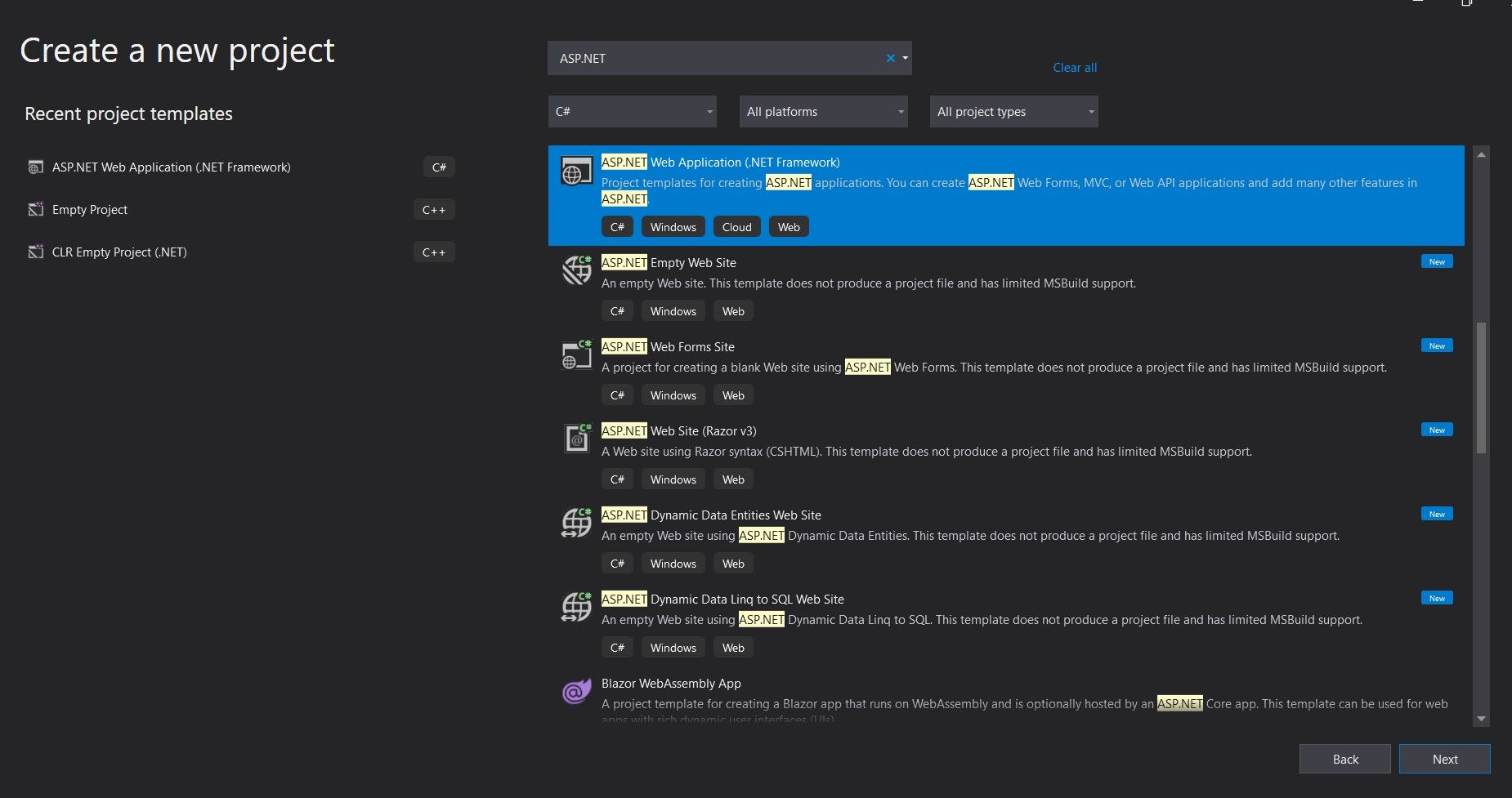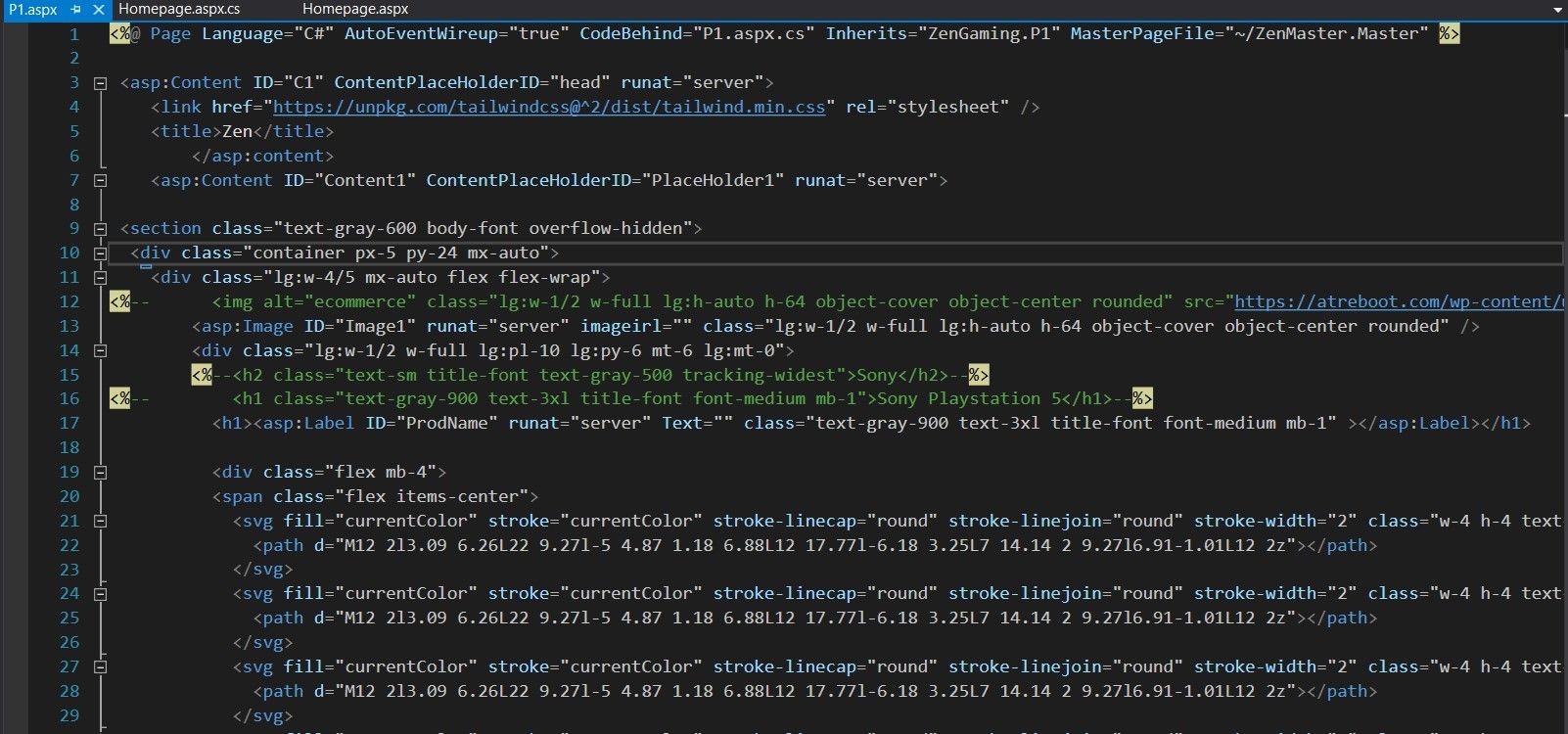ASP.NET is Microsoft’s free cross-platform framework for building web apps and services. The ASP.NET platform is an extension to .NET, a developer platform of tools, programming languages, and libraries used to build different applications.
As you have probably guessed, ASP.NET is a fantastic framework beginners can use to build web apps. It offers a lot of flexibility and is easy to use. In this article, we’re going to help you create your first web pplication in ASP.NET using Microsoft Visual Studio.
What Is ASP.NET?
ASP stands for "Active Server Pages"; ASP and ASP.NET are server-side technologies used to display interactive web pages. ASP.NET provides developers a lot of flexibility in a sizable, versatile ecosystem with various libraries and tools. Developers can also create custom libraries that they can share with any application created on the .NET platform.
You can write the back-end code for your ASP.NET applications in C#, Visual Basic, or even F#. This flexibility allows developers to code the business logic and data access layer effectively. Another significant advantage of using ASP.NET is building dynamic web pages using C# with the help of a webpage templating syntax tool known as Razor.
Razor also provides a syntax for creating interactive dynamic web pages incorporating HTML, CSS, JavaScript, and C#. The client-side code is usually written in JavaScript, and ASP.NET can even be integrated with other web frameworks such as Angular or React.
ASP.NET also provides developers with an authentication system that includes a database, libraries, templates for managing logins, external authentication to Google, Facebook, etc., and more. Developers can make use of ASP.NET on all major platforms, including Windows, Linux, macOS, and even Docker.
How to Create an ASP.NET Web Application in Visual Studio
Before creating a web application, it's best that you familiarize yourself with HTML, CSS, JavaScript, and C#, so that you can make the most out of ASP.NET. Let’s look at how you can create a web application in ASP.NET in Microsoft Visual Studio 2019.
Make sure you have the following software packages installed:
- Microsoft Visual Studio 2019 or better
- ASP.NET and web development workload from the Visual Studio Installer
Understanding the ASP.NET Web Application Project Components
Before you can begin developing your web app, it's crucial to understand the essential components of ASP.NET and how you can utilize them in your web application.
In this tutorial, we'll be using ASP.NET web forms to create the individual web pages such as the Homepage, Contact Us etc. Each web form has three main components, an .aspx file for the HTML/CSS, an .aspx.cs code file and an .aspx.designer.cs file. We'll mostly be working in the .aspx and .aspx.cs files for this tutorial.
The .aspx file will contain all of the HTML and CSS code of your web pages. Make sure that you use asp tags rather than HTML tags, because asp tags fetch data from the server and send input data to the server. This is the functionality characteristic is required in a dynamic web application.
The .aspx.cs file contains the C# code of your web pages, and this controls what happens when a particular event such as a web page is loaded, a button is clicked, and more. You can create separate functions for each function and link it to the relevant asp tag in the corresponding .aspx file.
Master Pages are beneficial for developers and add essential components such as the navigation bar and footer to each web page. Instead of adding the same code repetitively, developers can add all the template-required code in one master page and then link each webpage to the master page. We’ll show you how to do that in the following sections.
Create a New ASP.NET Web App Project
The first step in creating a web application in ASP.NET is to select a project template and create a new web application:
- Launch Microsoft Visual Studio and click on Create a new project
- Type ASP.NET in the template search box, select ASP.NET Web Application (.NET Framework) and click Next. You won't get this template if you don't have the required installations mentioned in the previous section.
- In the next screen, configure your project name and directory and click on Next.
- Visual Studio will now create your project template, and you should be able to run the template application by clicking on the green play button at the top of the screen.
Create a New ASP.NET Web Form
To help you better understand ASP.NET, we'll create a simple product page for a gaming store. The first step is to create a new webform. In the project you created earlier, navigate to File > New > File and select Web Form. Once you’ve set it up, you should be able to see a blank .aspx file with just the header code.
To start developing the overall look of your web page, you can use either code in the HTML/CSS yourself or use a template from Tailblocks.
We set up the above product page layout using a template. It displays a product image, product details, and a navigation bar. We added the HTML and CSS of the navigation bar using the master page.
In the code above (.aspx.cs file), we’ve set up the loadpage function to set product details in our placeholders. You can create similar functions for login, signup, add to cart, etc.
A sample asp tag to show the product description is as follows:
<asp:Label ID="description" runat="server" Text="" class="leading-relaxed"></asp:Label>
The description value from the C# code will be displayed in this placeholder. You can also utilize Visual Studio’s Toolbox to add display elements such as images, buttons, radio buttons, and more. There are several resources available online where you can learn the ASP.NET syntax.
ASP.NET Web Application For Beginners
ASP.NET is a powerful platform for creating web applications and services. You must be comfortable with JavaScript, HTML, CSS, and C# before developing a web application in ASP.NET.






